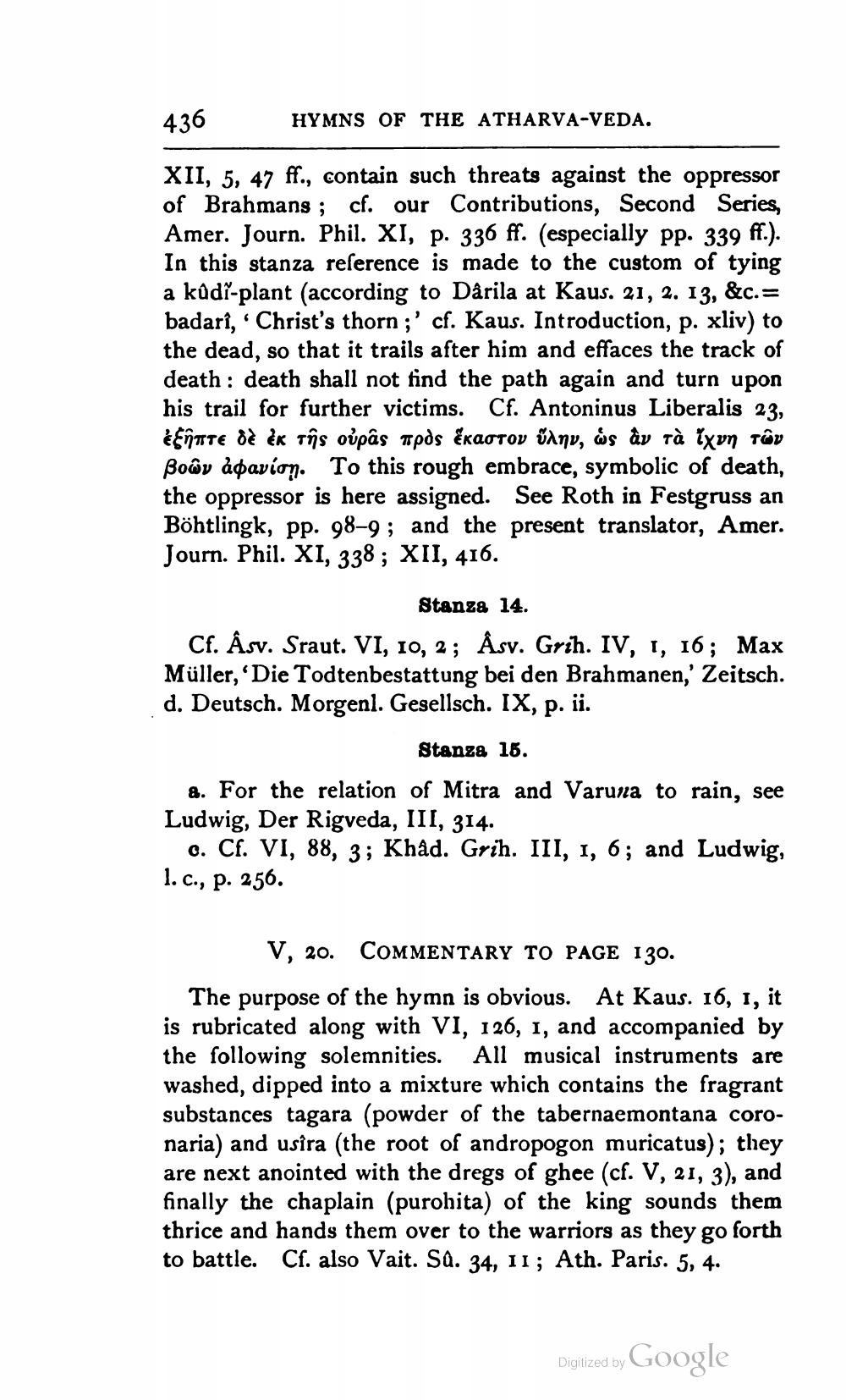________________
436
HYMNS OF THE ATHARVA-VEDA.
XII, 5, 47 ff., contain such threats against the oppressor of Brahmans ; cf. our Contributions, Second Series, Amer. Journ. Phil. XI, p. 336 ff. (especially pp. 339 ff.). In this stanza reference is made to the custom of tying a kūdi-plant (according to Dårila at Kaus. 21, 2. 13, &c.= badari, Christ's thorn ;' cf. Kaus. Introduction, p. xliv) to the dead, so that it trails after him and effaces the track of death : death shall not find the path again and turn upon his trail for further victims. Cf. Antoninus Liberalis 23, εξήπτε δε εκ της ουράς προς έκαστον ύλην, ώς αν τα ίχνη των Bowv apavion. To this rough embrace, symbolic of death, the oppressor is here assigned. See Roth in Festgruss an Böhtlingk, pp. 98-9; and the present translator, Amer. Journ. Phil. XI, 338 ; XII, 416.
Stanza 14. Cf. Åsv. Sraut. VI, 10, 2; Åsv. Grih. IV, 1, 16; Max Müller, ‘Die Todtenbestattung bei den Brahmanen,' Zeitsch. d. Deutsch. Morgenl. Gesellsch. IX, p. ii.
Stanza 16.
8. For the relation of Mitra and Varuna to rain, see Ludwig, Der Rigveda, III, 314.
o. Cf. VI, 88, 3; Khad. Grih. III, 1, 6; and Ludwig, 1. c., p. 256.
V, 20. COMMENTARY TO PAGE 130. The purpose of the hymn is obvious. At Kaus. 16, 1, it is rubricated along with VI, 126, 1, and accompanied by the following solemnities. All musical instruments are washed, dipped into a mixture which contains the fragrant substances tagara (powder of the tabernaemontana coronaria) and usira (the root of andropogon muricatus); they are next anointed with the dregs of ghee (cf. V, 21, 3), and finally the chaplain (purohita) of the king sounds them thrice and hands them over to the warriors as they go forth to battle. Cf. also Vait. Sa. 34, 11; Ath. Paris. 5, 4.
Digitized by Google




